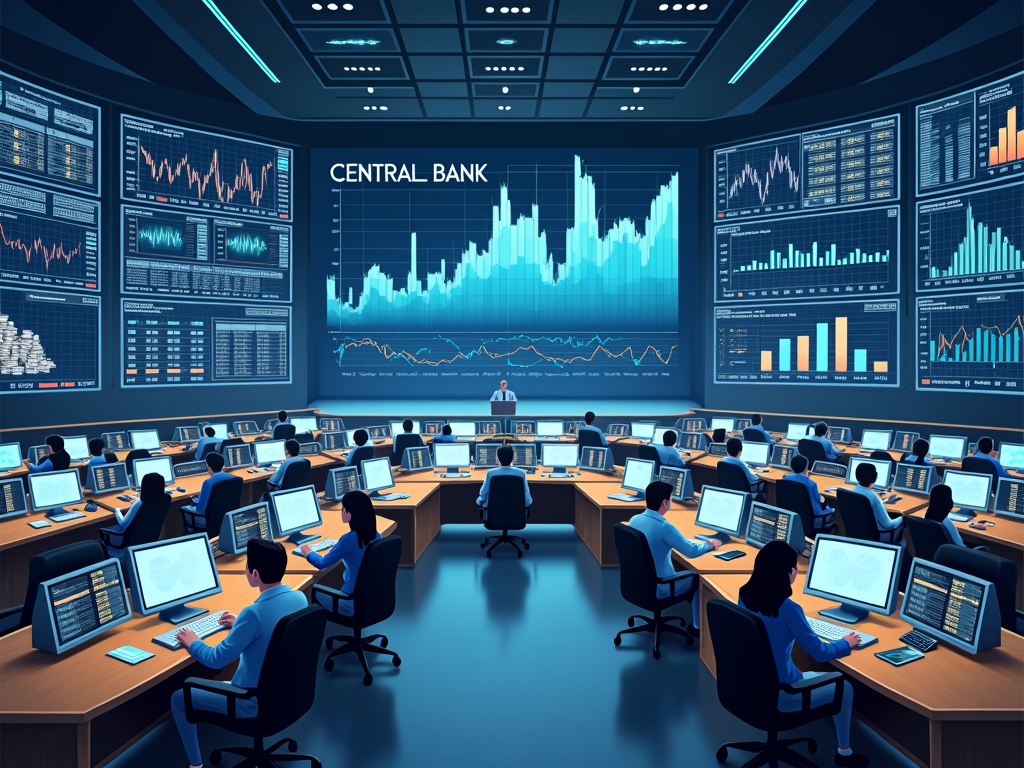Monetary policy acts as an invisible conductor, setting the tempo of the economy and ensuring that the orchestra of financial markets plays in harmony. Central banks, the guardians of monetary policy, use a range of tools to manage the economy and ensure stability. This article highlights the mechanisms behind monetary policy measures and the crucial role of central banks in promoting growth and controlling inflation.
Central Banks’ Tools: Engines of the Economy

The management of monetary policy is a central task of central banks through which they influence the economic environment. One of the main tools is the key interest rates, which serve to control borrowing costs. Lower interest rates reduce borrowing costs, which can stimulate consumption and investment. Conversely, higher interest rates lead to more expensive loans, which can slow economic growth, but is useful for containing excessive inflation.
Another significant tool is the open market operations. These involve the buying and selling of securities, particularly government bonds, which have a direct impact on the amount of money in the economy. The purchase of bonds by the central bank injects money into the economic system, allowing banks to have more liquidity. This can lower interest rates and facilitate lending. In contrast, selling securities withdraws money from the market and can raise interest rates.
Central banks also exert their influence through the minimum reserve requirement. This regulation establishes what percentage of deposits banks must hold as reserves. By adjusting this requirement, the central bank can indirectly regulate lending. An increase in the reserve requirement reduces banks’ liquidity and can limit their ability to lend. Conversely, a reduction can expand the supply of loans.
The effects of monetary policy on the economy are complex. Through manipulating interest rates and the money supply, an expansionary monetary policy often aims to promote economic growth and employment. However, there is a risk of an inflationary effect when an increase in the money supply meets an overheated market. At the same time, a restrictive policy, aimed at raising rates, often seeks to reduce the inflation rate and ensure the stability of currency and price levels. However, these measures can also affect competitiveness and trade balances, which is particularly relevant in internationally interconnected markets.
Through these tools, central banks remain central actors in the economy, impacting not only national markets but also on an international level.
Central Banks: Guardians of Economic Stability

Central banks play a key role in the global economy through their monetary policy strategies. Their ability to manage the money supply and maintain price stability is crucial for the level of well-being of countries and regions. The main tasks they perform in this system underscore their importance as guardians of economic order.
The management of monetary policy is one of the priority tasks of a central bank. By manipulating the key interest rates and conducting open market operations, they influence the money supply and, consequently, also inflation and economic growth. A typical scenario is the adjustment of interest rates: low rates are a tool to stimulate investments and consumption, while high rates are used to keep inflation in check. Finding this balance is a constant challenge.
Also of great importance is the issuance of banknotes and ensuring currency stability. Central banks ensure that the right amount of cash is in circulation to maintain the balance between inflation and deflation. An excess of money in circulation can reduce purchasing power, while a scarcity of money may lead to a deflationary spiral.
As the “bank of banks”, central banks also act as a lender of last resort for commercial banks in distress. By providing liquidity, they prevent short-term funding gaps from evolving into larger financial crises. This lender of last resort role is crucial for maintaining stability in the banking system.
Foreign exchange reserves, in the form of foreign currencies and gold, are another important element in the central banks’ arsenal. Through the management of these reserves, central banks influence exchange rates and protect their economies from external shocks. Protection against economic crises and the stabilization of the national currency in international markets heavily depend on these measures.
Finally, central banks contribute to the supervision and regulation of the financial system. By monitoring risks and assessing the health of the banking sector, they prevent systemic collapses and promote a stable financial environment.
Central banks such as the European Central Bank (ECB) or the Federal Reserve (Fed) of the United States illustrate through their monetary policy decisions how complex and fundamental their role is in the economic tapestry. Especially in times of economic uncertainties and technological changes, their task is to find innovative solutions to ensure economic stability.